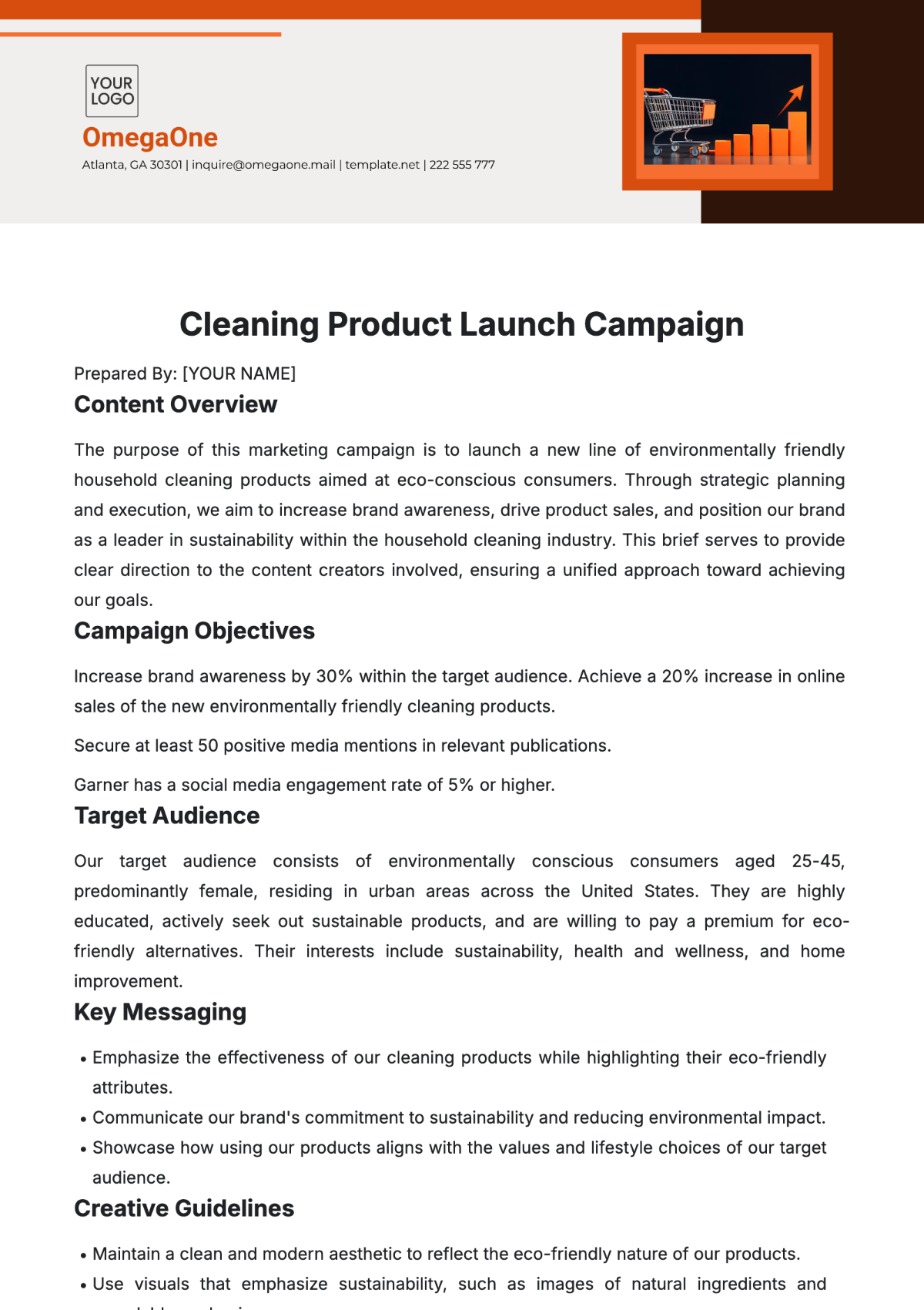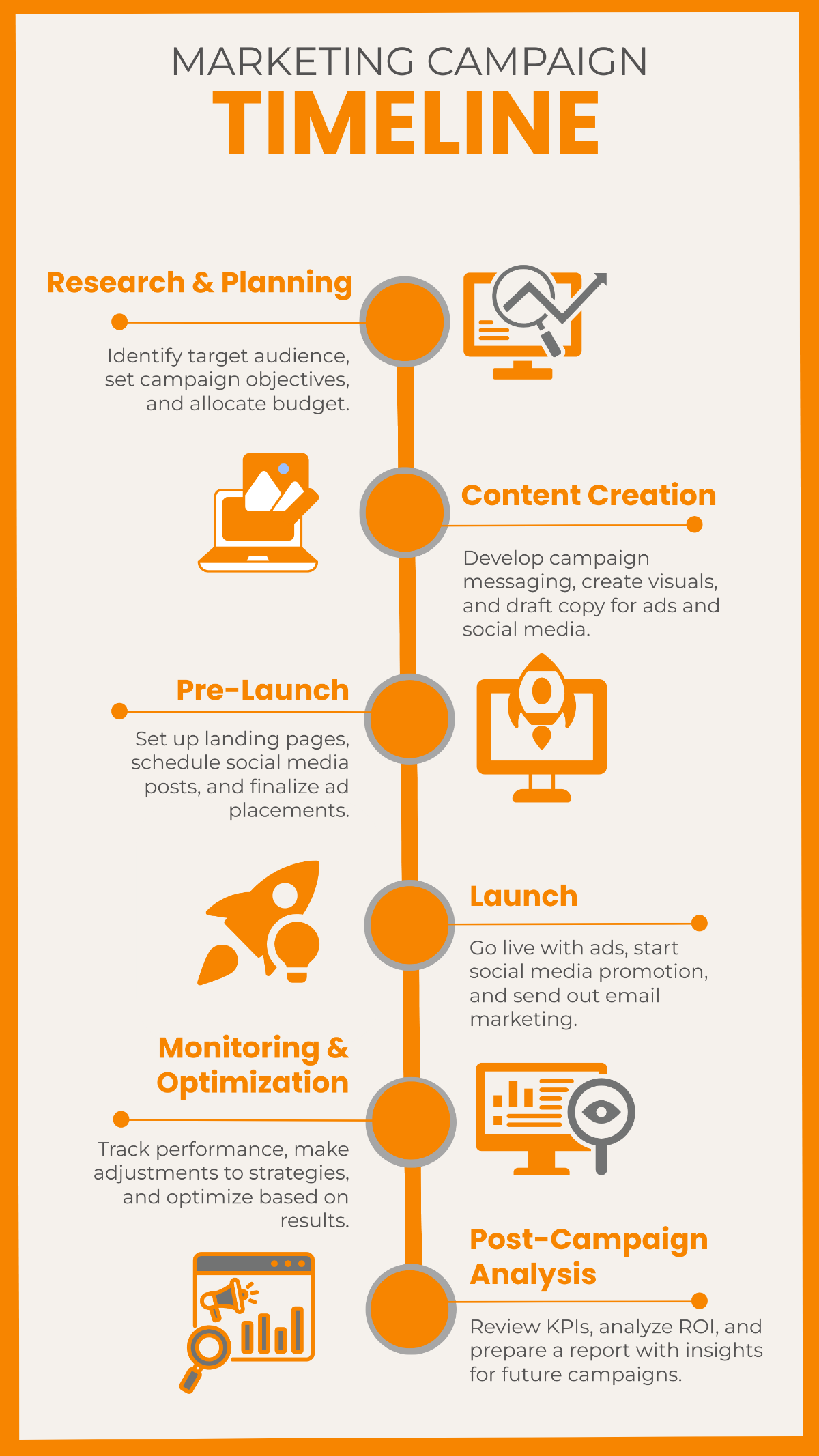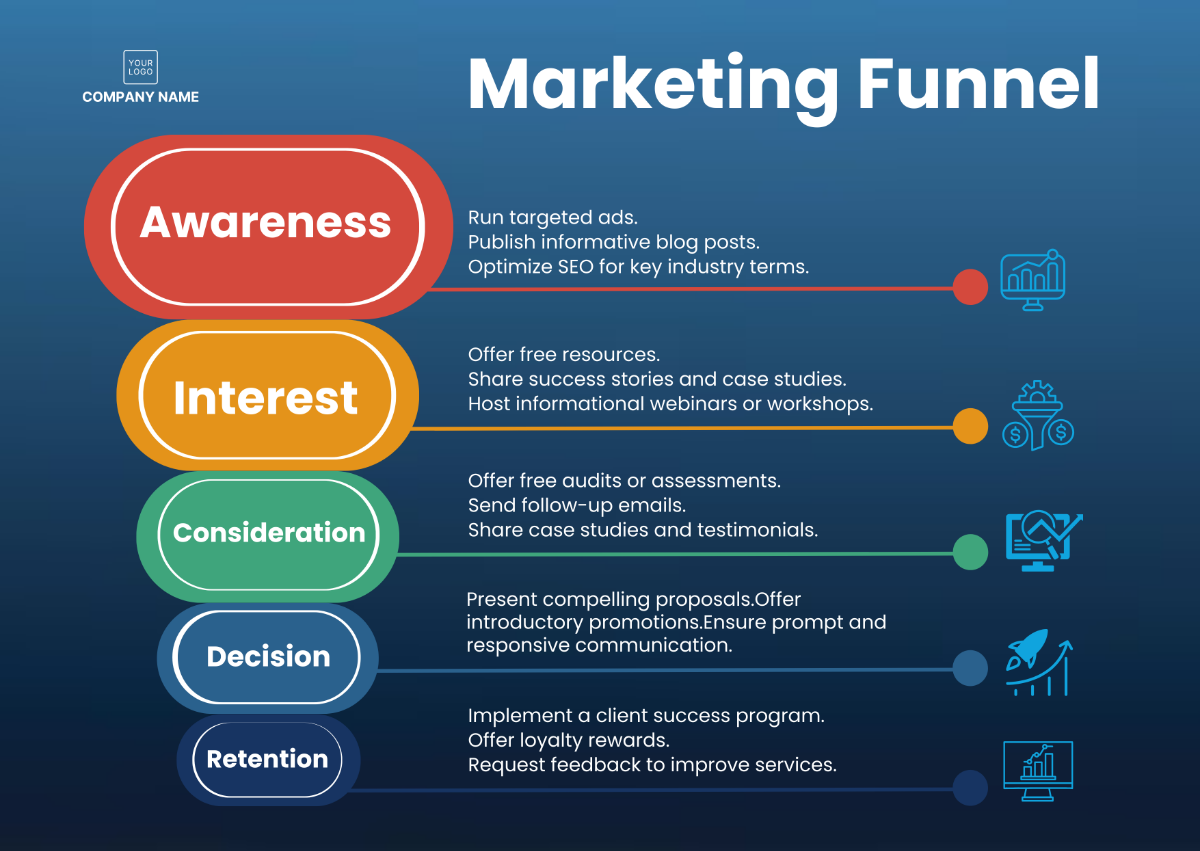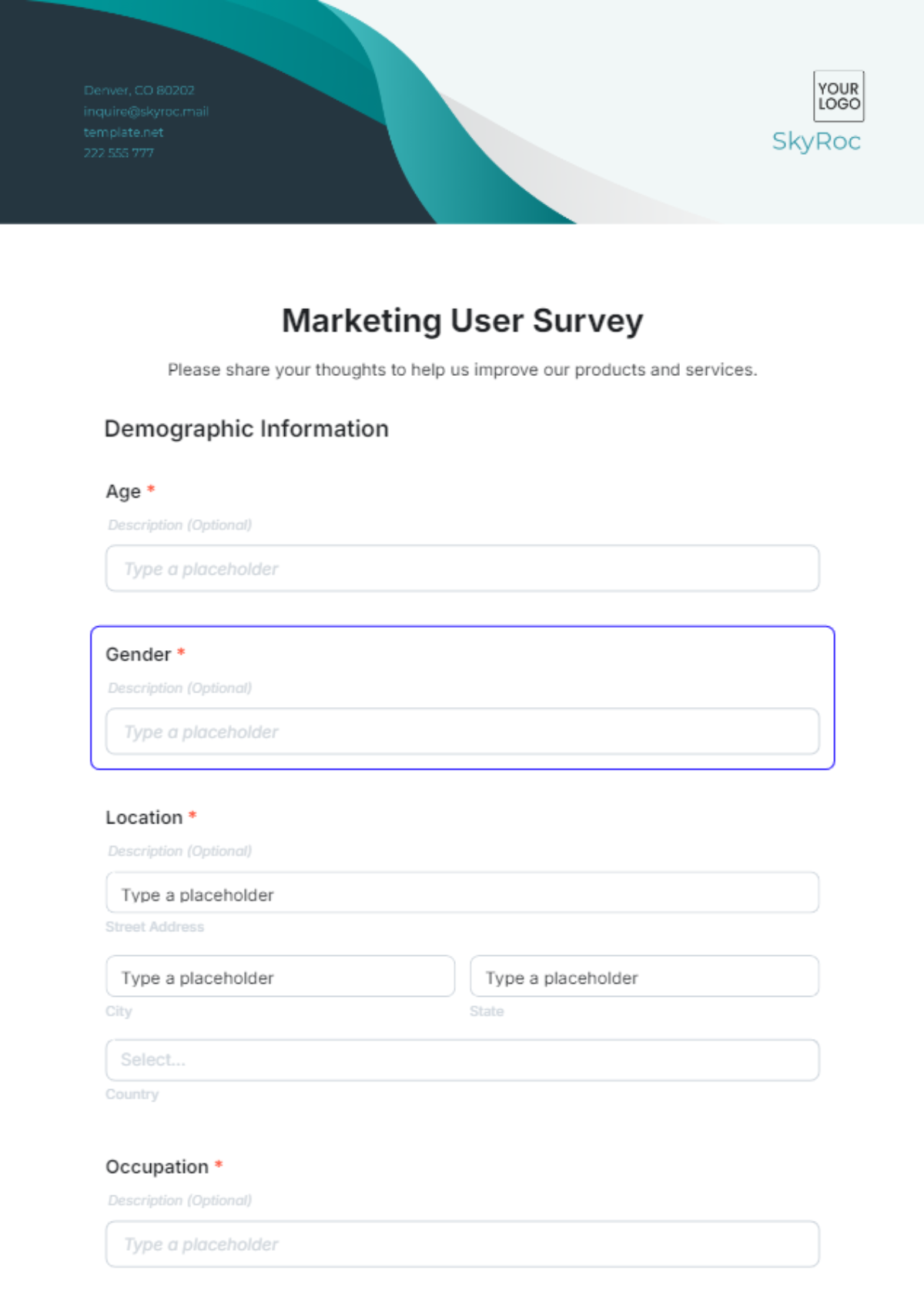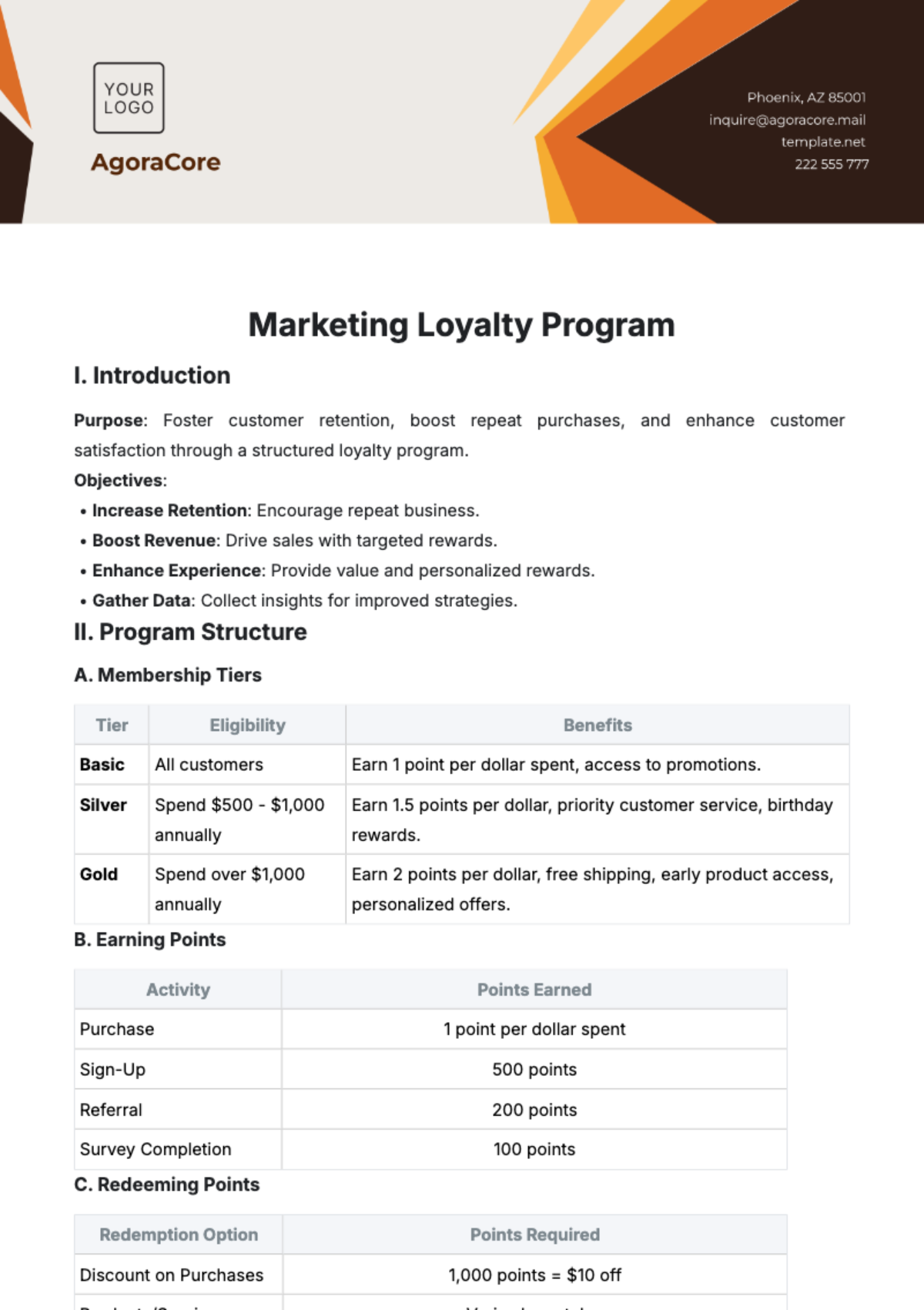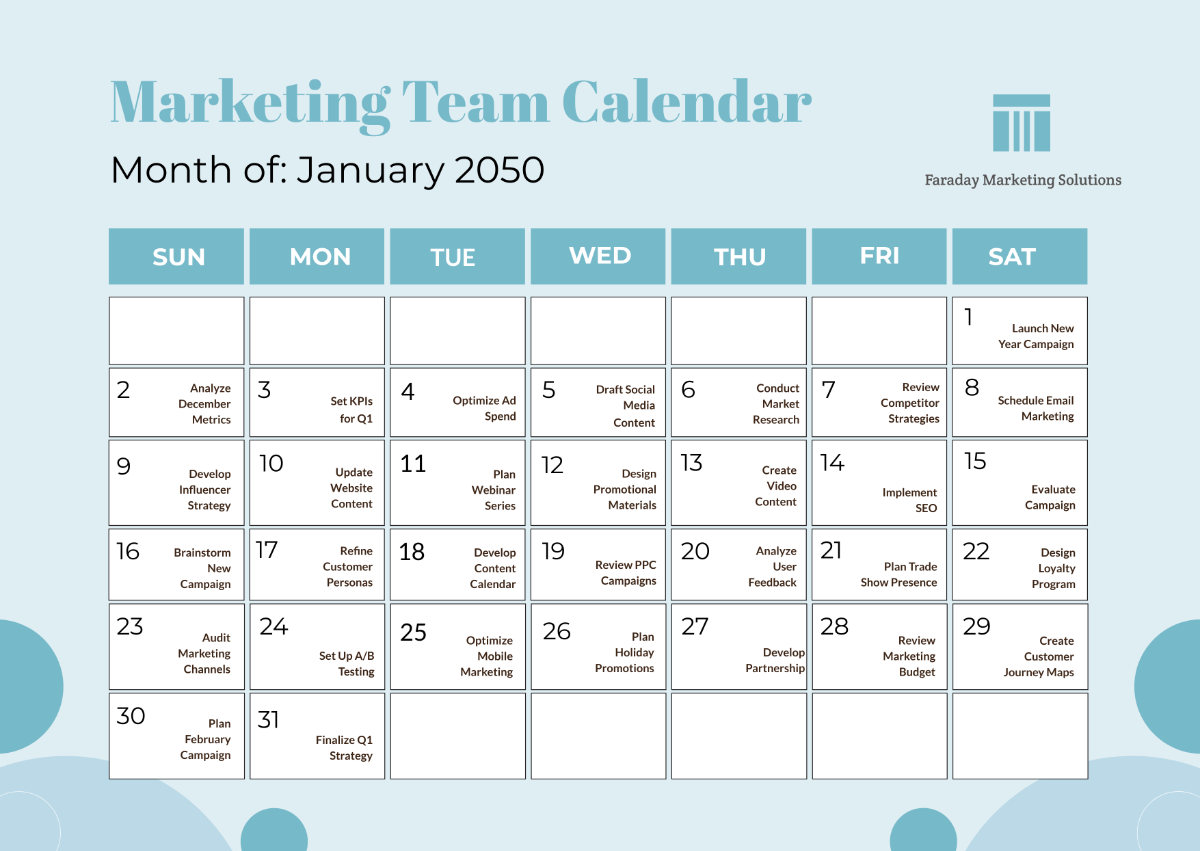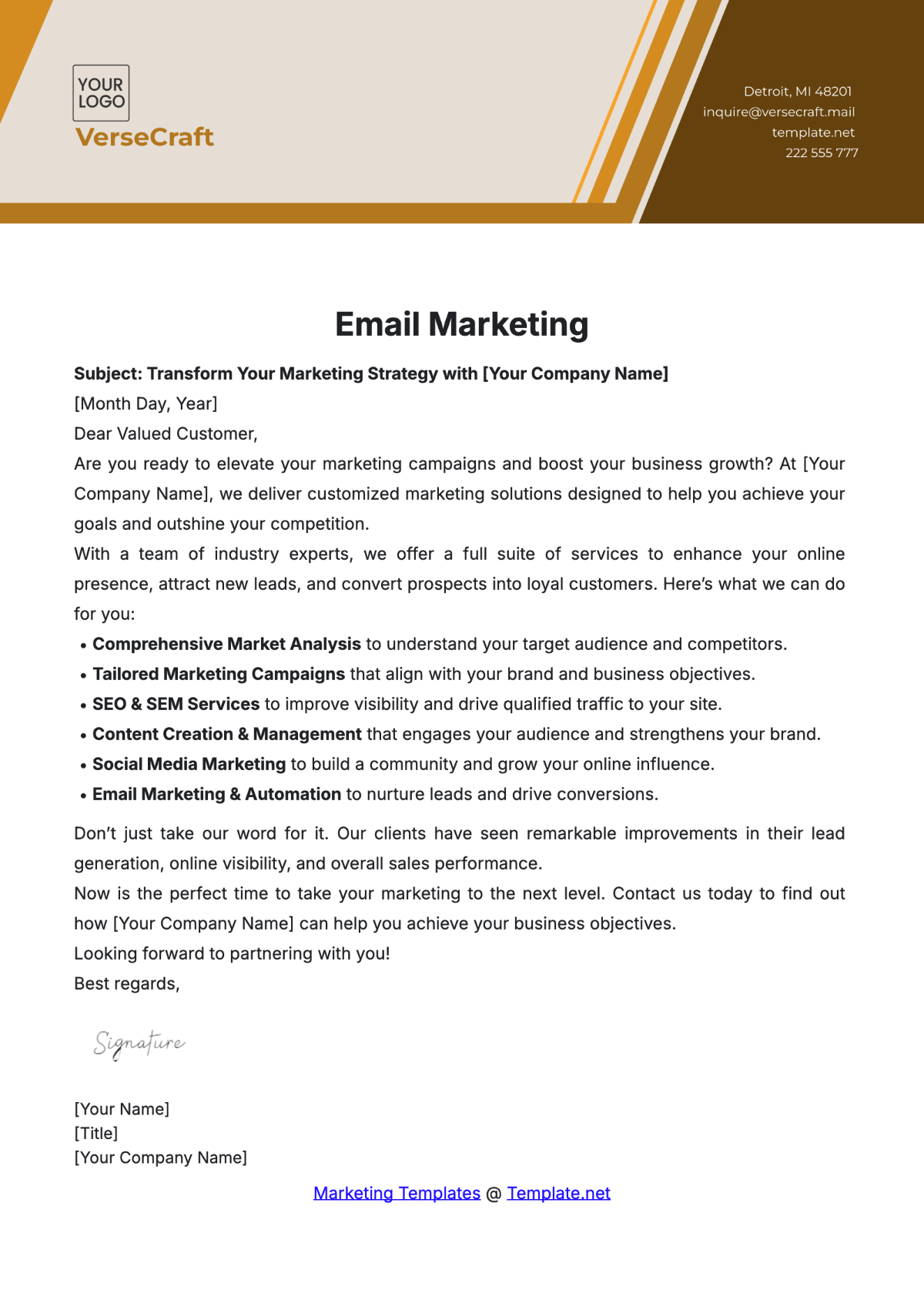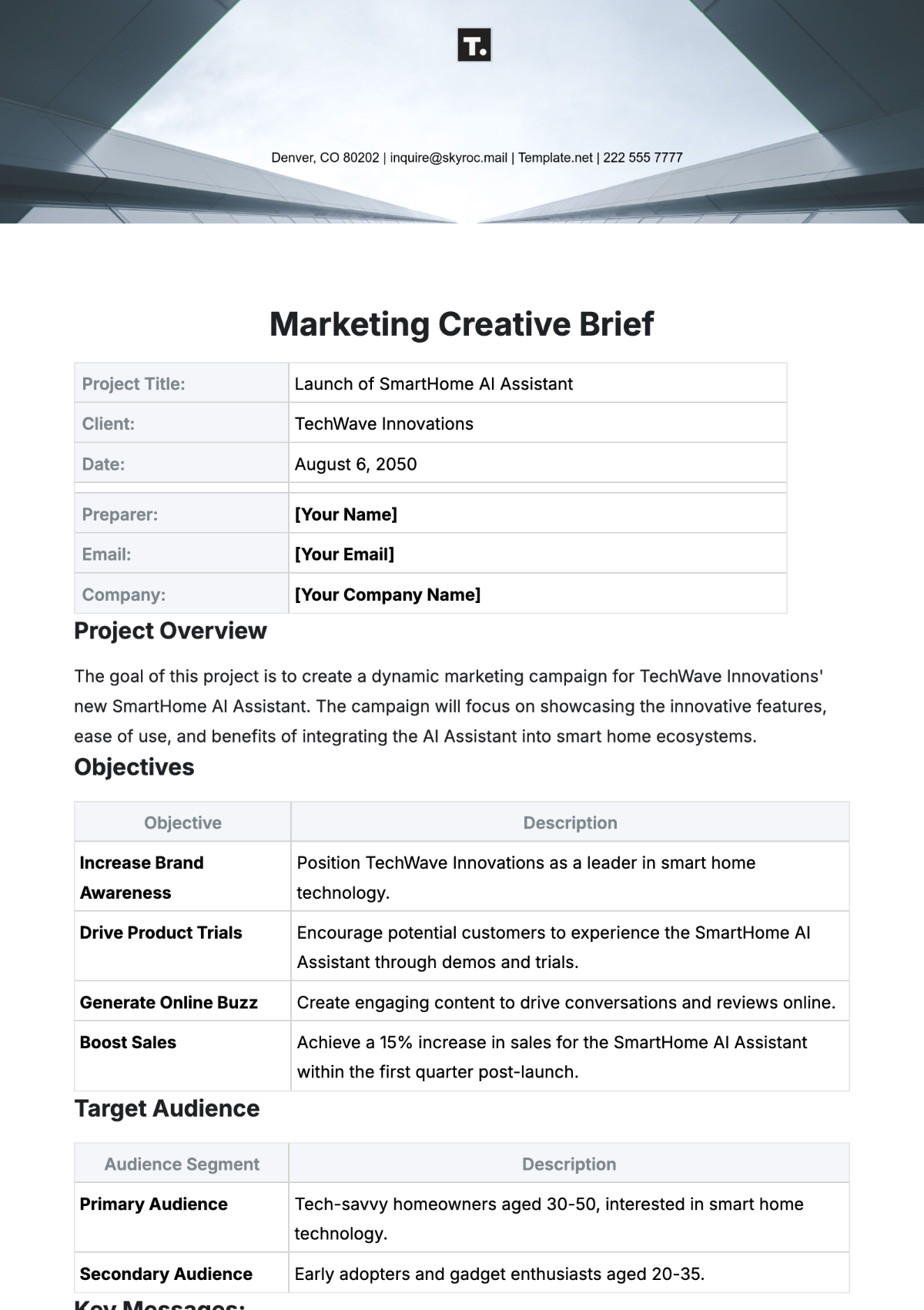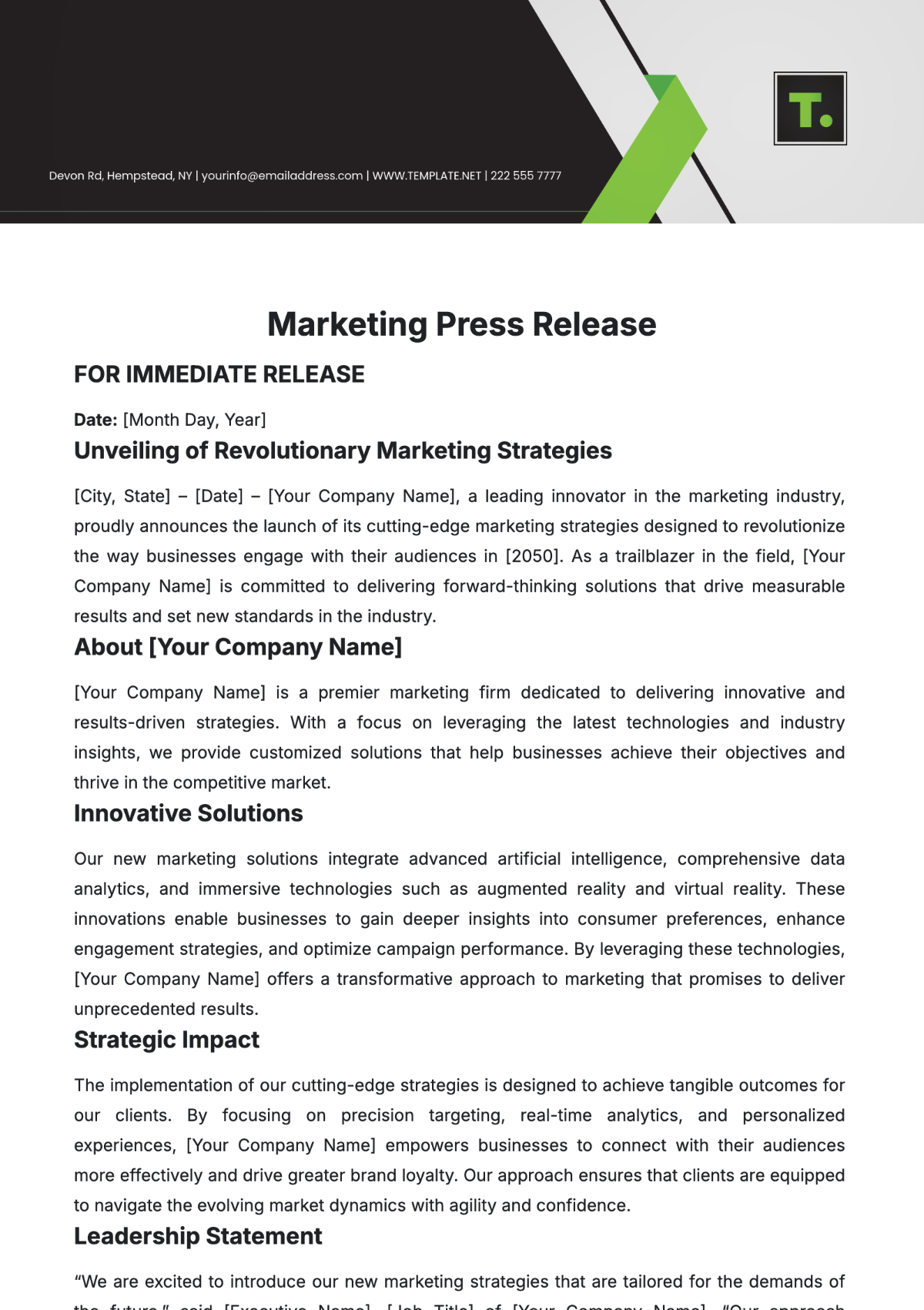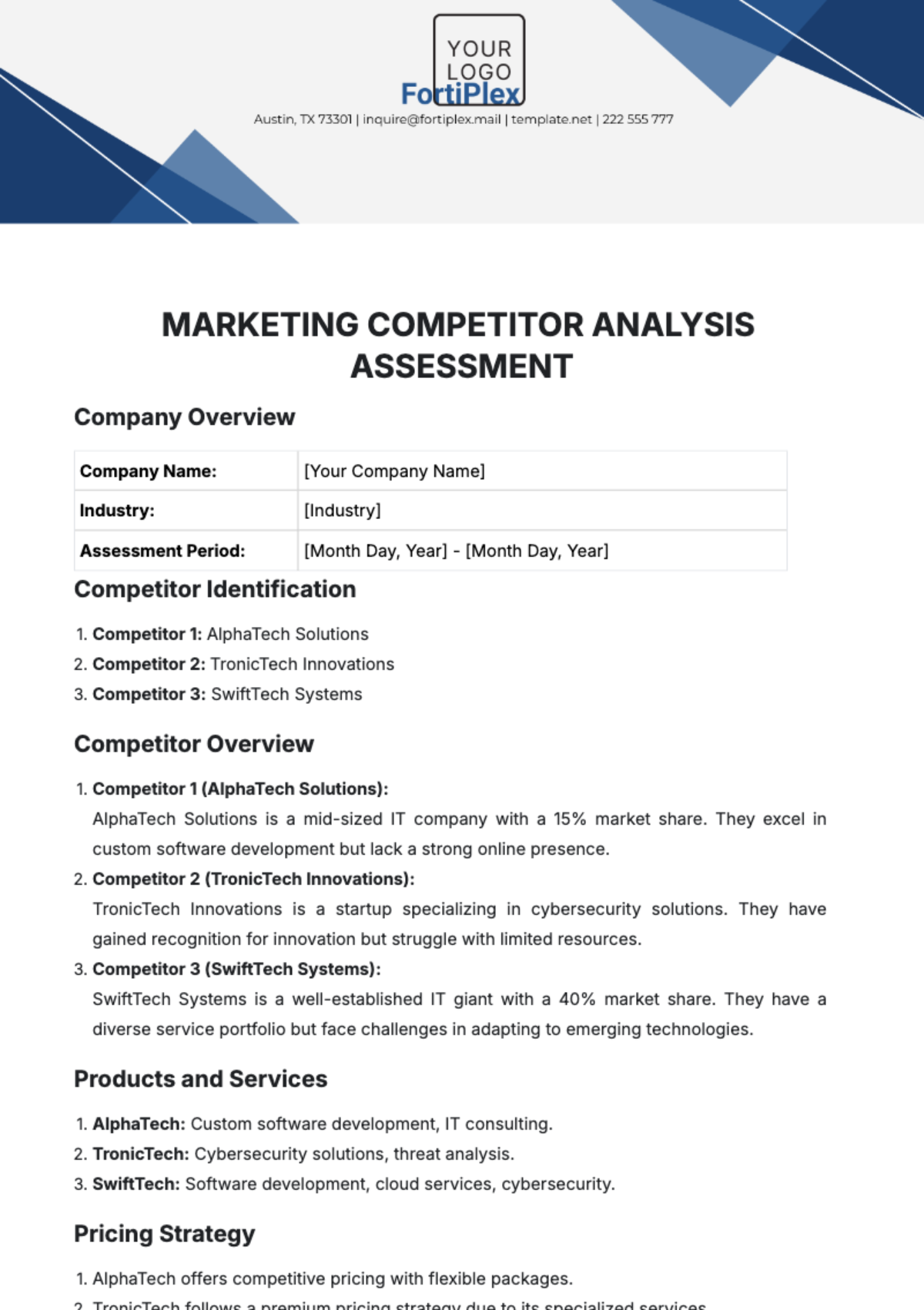Marketing Guide to Managing Media Feedback
1. Introduction
Welcome to the Marketing Guide to Managing Media Feedback for [Your Company Name]. This document is designed to help you effectively manage feedback from media outlets and journalists. In an era where public perception can make or break a brand, managing media feedback is crucial. This guide will provide you with the strategies and tools to handle media feedback professionally and proactively.
2. Media Contact Information
In this section, you will compile a list of key media outlets, journalists, and influencers who are relevant to your industry or niche. This information will be essential for initiating and maintaining communication with media representatives.
2.1 Media Outlet 1:
Contact Name: John Smith
Email: john.smith@example.com
Phone: 222 555 7777
2.2 Media Outlet 2:
Contact Name: Jane Doe
Email: jane.doe@example.com
Phone: 222 555 7777
2.3 Media Outlet 3:
Contact Name: Mark Johnson
Email: mark.johnson@example.com
Phone: 222 555 7777
3. Feedback Collection Process
This section outlines the process for collecting feedback from various media sources. Effectively managing media feedback begins with a clear understanding of how it's gathered. Feedback collection methods may include:
Monitoring Social Media Platforms: Regularly track social media channels such as Twitter, Facebook, and LinkedIn using the company monitoring tool, to identify mentions, comments, and discussions related to your brand or industry.
Tracking Online Articles and Blog Posts: Utilize the company monitoring tool to monitor online articles, blogs, and news websites that mention your company. Set up alerts to stay informed in real-time.
Receiving Direct Emails and Messages from Journalists: Encourage journalists to reach out directly through [Your Company Email] or [Your Company Website]. Ensure that these inquiries are promptly attended to.
It's crucial to clearly outline the feedback collection process within your team, assign responsibilities, and keep everyone informed about the sources and channels being monitored.
4. Feedback Categorization
Effectively categorizing feedback is essential for prioritizing responses and taking appropriate actions. Feedback can generally be categorized into four main types:
Positive Feedback: Feedback that praises your products, services, or actions. It often reflects satisfaction and can be a valuable resource for marketing and reputation management. Positive feedback might include customer testimonials, endorsements, or commendations.
Negative Feedback: Feedback that expresses dissatisfaction, disappointment, or criticism. Negative feedback should be acknowledged and addressed promptly to prevent further escalation. Negative feedback might include complaints, grievances, or concerns.
Constructive Feedback: Feedback that offers specific suggestions or insights for improvement. This type of feedback can be valuable for making necessary adjustments and refining your products or services. Constructive feedback might include recommendations, enhancement ideas, or actionable advice.
Neutral Feedback: Feedback that is neither overtly positive nor negative. While it may not require an immediate response, it's important to acknowledge and monitor neutral feedback to identify potential trends or emerging issues. Neutral feedback might include general comments or observations without a clear positive or negative tone.
Clear definitions and categorizations will help your team respond appropriately to different types of feedback and maintain a consistent approach when managing media feedback.
5. Response Strategy
In this section, we will outline a strategy for responding to media feedback, ensuring that our interactions are professional, timely, and aligned with our brand's objectives.
Designated Spokesperson: John Doe
Spokesperson Contact Information: john.doe@example.com, 222 555 7777
5.1 Guidelines for Responding to Media Feedback:
Timely Responses: Respond to media feedback promptly. Acknowledge and thank individuals for positive feedback as soon as possible. Address negative or constructive feedback within 24 hours, aiming for a swift resolution.
Categorization: Utilize the feedback categorizations outlined in Section 4 to determine the appropriate response approach.
Designated Spokesperson: John Doe will serve as our designated spokesperson for media interactions. John can be reached at john.doe@example.com and 222 555 7777.
Key Messaging Points: Maintain consistency in our responses by emphasizing key messaging points:
- Highlight our commitment to quality and customer satisfaction.
- Express gratitude for feedback, positive or negative, as it helps us improve.
- Address negative feedback professionally and provide resolutions or next steps.
- Acknowledge constructive feedback and outline how we plan to implement suggestions.
- For neutral feedback, acknowledge and monitor for potential trends.
Personalization: Personalize responses where appropriate, addressing individuals by their name and expressing genuine interest in their input.
Escalation: In cases requiring higher-level attention or crisis management, refer to the escalation plan outlined in Section 8.
Spokesperson and Messaging
In this section, we will detail the roles and responsibilities of our designated spokesperson or team and specify the tone and messaging to be used when communicating with the media. Maintaining a positive brand image is paramount.
Designated Spokesperson: John Doe
Spokesperson Contact Information: john.doe@example.com, 222 555 7777
6.1 Roles and Responsibilities:
The designated spokesperson will serve as the primary point of contact for media interactions.
John Doe will be responsible for conveying a consistent and positive brand image in all communications.
Respond to media feedback in a timely, professional, and empathetic manner.
Collaborate with the marketing and public relations teams to ensure messaging consistency.
6.2 Tone and Messaging:
Maintain a polite and respectful tone in all interactions.
Emphasize our company's commitment to customer satisfaction, quality, and continuous improvement.
Be open to feedback and ready to address concerns or provide solutions.
Use clear and concise language, avoiding jargon or technical terms that may not be easily understood by the general public.
Address questions or inquiries with transparency, sharing relevant information as appropriate.
7. Monitoring Tools
To effectively manage media feedback, we rely on robust monitoring tools and software. Here are the tools we use:
7.1 Monitoring Tool 1: BrandWatch
BrandWatch is a comprehensive media monitoring tool that provides real-time insights into social media mentions, news articles, and sentiment analysis.
Access Details: Login credentials provided to the team
7.2 Monitoring Tool 2: Google Alerts
Google Alerts is a versatile tool for tracking mentions of our company across the web.
Access Details: Team members receive email notifications
These monitoring tools enable us to track media coverage, sentiment analysis, and social media mentions, ensuring that we stay informed and responsive to media feedback in real-time.
8. Escalation Plan
In this section, we describe a plan for escalating issues or feedback that require higher-level attention or a crisis management response. It's crucial to have a well-defined escalation plan to address serious matters effectively.
Escalation Contact 1: John Smith - john.smith@example.com, 222 555 7777
Escalation Contact 2: Jane Doe - jane.doe@example.com, 222 555 7777
8.1 Escalation Plan:
Initial Assessment: When a media feedback issue arises that is beyond the scope of the designated spokesperson or team, it will be promptly assessed.
Escalation Contact 1: John Smith (Director of Public Relations) will be the first point of contact for escalations. John's contact information is john.smith@example.com and 222 555 7777. He will assess the situation and determine the appropriate course of action.
Escalation Contact 2: If the situation requires further attention, it will be escalated to Jane Doe (VP of Marketing) at jane.doe@example.com and 222 555 7777. Jane will work closely with the crisis management team, if necessary.
Crisis Management Team: In the event of a significant crisis, our dedicated crisis management team will be activated..
9. Feedback Analysis
In this section, we explain how feedback will be analyzed to gather insights that can inform our marketing strategy and product/service improvements. Gathering and analyzing feedback is essential for continuous growth and improvement.
9.1 Frequency and Format of Feedback Reports:
Frequency: Feedback analysis will be conducted on a quarterly basis, providing regular insights into our media feedback landscape.
Format: Feedback reports will be prepared in a comprehensive format that includes:
- Summary of feedback types (positive, negative, constructive, neutral).
- Key trends and recurring themes in the feedback.
- Sentiment analysis, showcasing shifts in sentiment over time.
- Comparative analysis against previous quarters.
- Recommendations for action based on the feedback analysis.
The feedback analysis reports will be shared with relevant teams, including marketing, product development, and customer support, to inform strategy and improvements.
10. Documentation and Reporting
In this section, we outline how feedback and responses will be documented and reported within our organization. Proper documentation and reporting ensure that we maintain a clear record of our interactions and actions.
10.1 Documentation and Reporting Process:
Feedback Documentation: All media feedback, whether received through social media, emails, or other channels, will be documented using our standardized Feedback Documentation Template. This template includes fields for feedback categorization, details of the feedback source, and a summary of the feedback.
Response Logging: Responses to media feedback will be recorded in our Response Log Template. This log will capture the date, time, content of the response, and any follow-up actions taken.
Regular Reporting: Chona Mae, our feedback analyst, will compile feedback analysis reports, incorporating data from the Feedback Documentation Template and Response Log Template. These reports will be shared with relevant teams and stakeholders on a quarterly basis.
By maintaining clear documentation and regular reporting, we ensure that media feedback is systematically tracked, responded to, and used to drive improvements across our organization.
11. Training
In this section, we provide training materials for our team members on how to effectively manage media feedback and interact with journalists. Proper training ensures that our team is well-equipped to handle media interactions professionally.
11.1 Training Materials:
Media Feedback Management Guide: We have developed a comprehensive guide that covers best practices for managing media feedback. It includes strategies for responding to different types of feedback, tips for effective communication, and case studies illustrating successful media interactions.
Media Interaction Workshops: Periodically, we conduct workshops where team members can practice handling media inquiries and feedback scenarios. These workshops provide practical experience and feedback from experienced team members.
Journalist Interaction Training: For team members who may interact directly with journalists, we offer training sessions focused on effective journalist communication. This includes tips for crafting press releases, conducting interviews, and building positive media relationships.
Online Resources: We provide access to a library of online resources, articles, and webinars related to media feedback management and media relations.
Role-Specific Training: Depending on team roles and responsibilities, we tailor training materials to specific needs. For example, our social media team receives training on social media crisis management.
12. Key Performance Indicators (KPIs)
In this section, we define measurable KPIs to evaluate the success of our media feedback management efforts. These KPIs allow us to track our performance and identify areas for improvement.
12.1 Key Performance Indicators (KPIs) Table:
Key Performance Indicator | Definition |
Sentiment Score | Measure of overall sentiment in media feedback. A positive score indicates positive sentiment, while a negative score indicates negative sentiment. |
Response Time | Average time taken to respond to media feedback from the moment it is received. |
Media Coverage Reach | The extent of media coverage achieved, quantified by the number of media outlets or publications that feature our brand or products. |
Engagement Rate | The level of engagement (likes, shares, comments) on our social media responses to media feedback. |
Issue Resolution Rate | Percentage of negative or constructive feedback that is resolved to the satisfaction of the concerned parties. |
Trend Identification | The ability to identify emerging trends or issues in media feedback that may impact our business strategy. |
Positive Brand Mentions | The number of positive brand mentions in media feedback, indicating a strong positive brand image. |
Media Outreach Success | The success rate of media outreach efforts, measured by the number of media outlets that pick up our press releases or stories. |
These KPIs will be regularly monitored and reported to assess the effectiveness of our media feedback management efforts and guide our strategies for continuous improvement.


